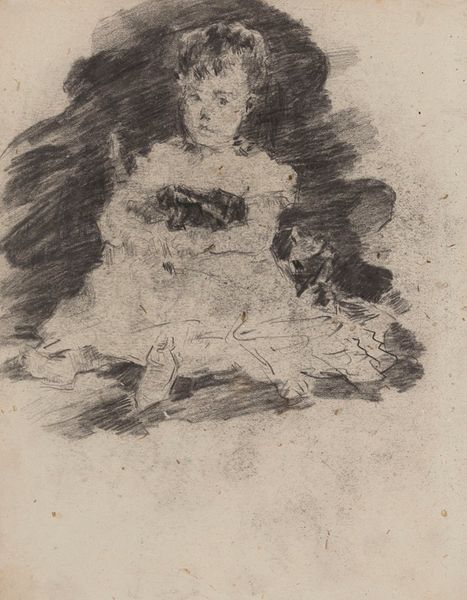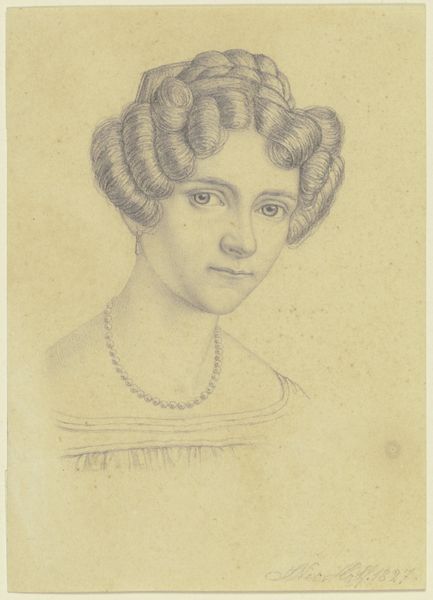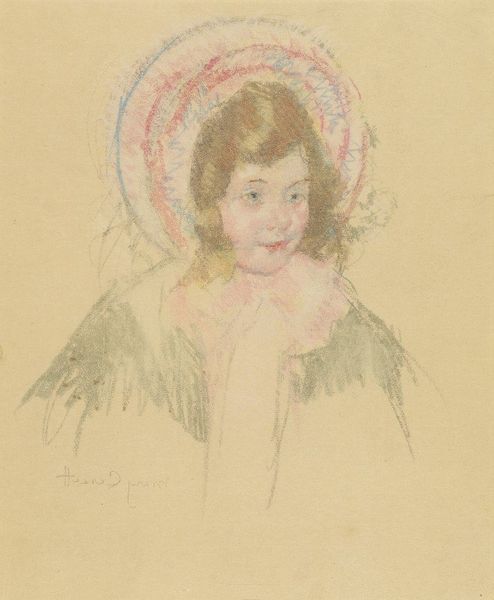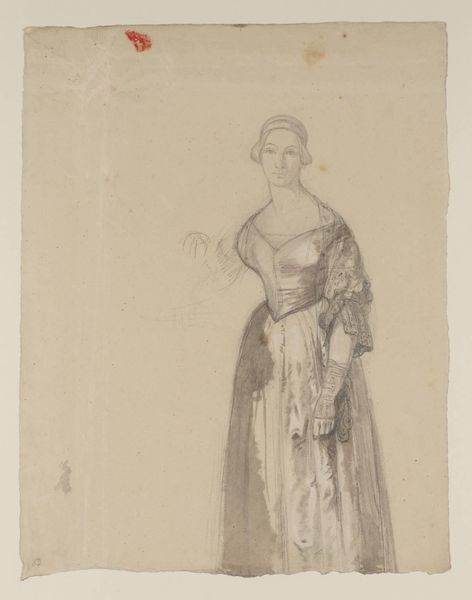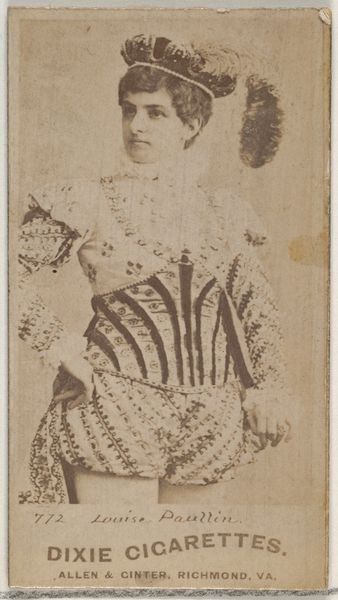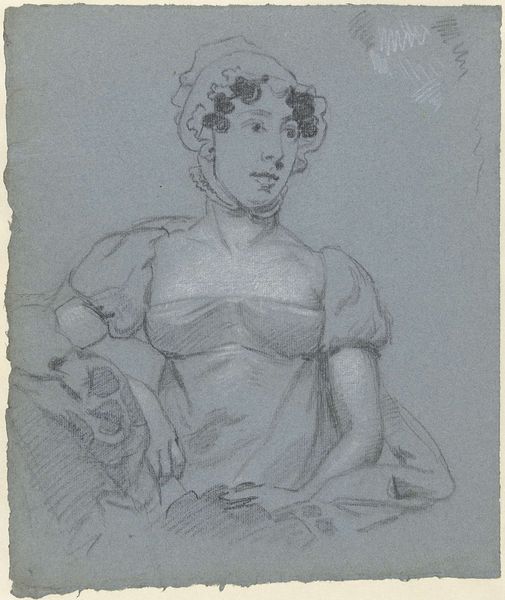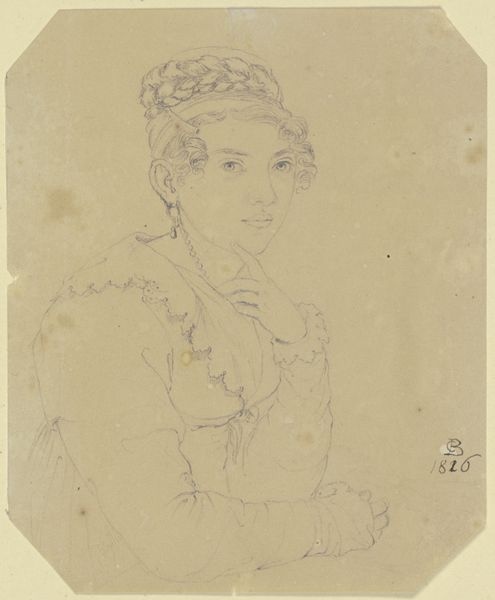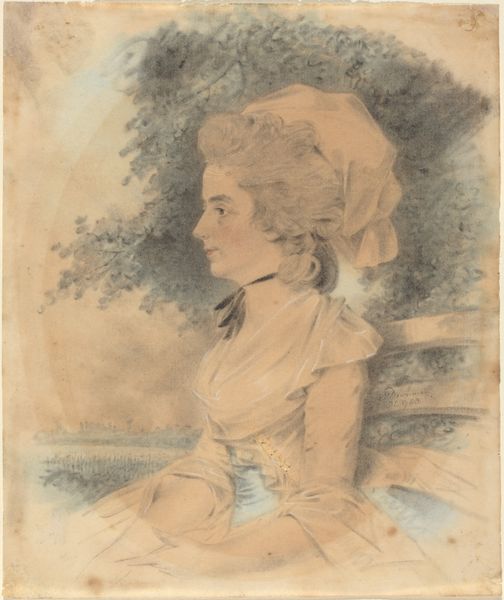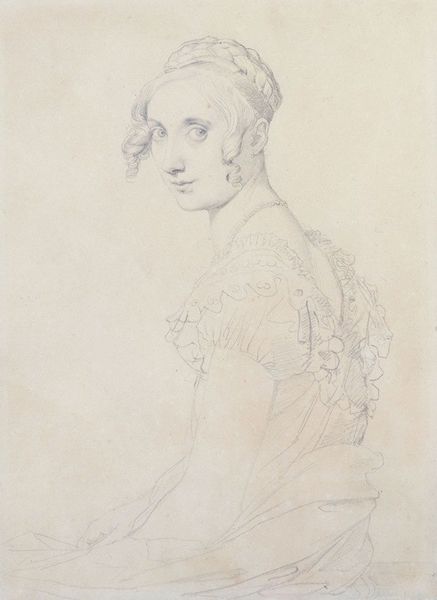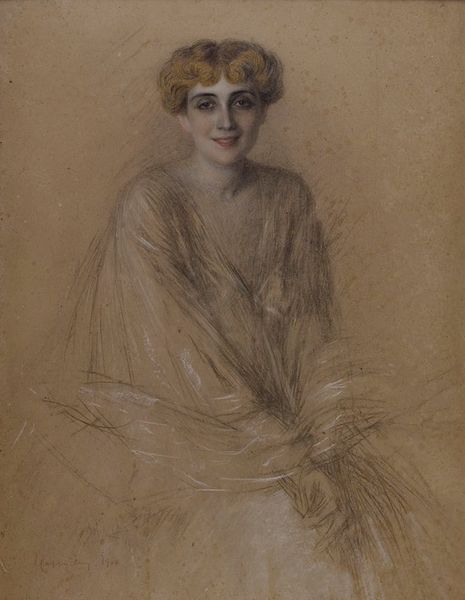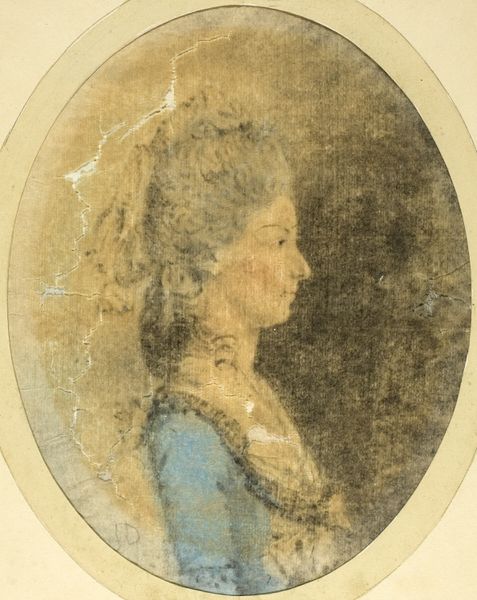
Copyright: Public Domain: Artvee
Editor: So, here we have Tadeusz Makowski's "Woman in a Lilac Dress," created in 1907 using pastels. There’s almost a dreamlike quality to her expression and the softness of the medium. What particularly jumps out at you when you look at this portrait? Curator: Isn't she ethereal? The hazy pastel really captures a fleeting moment. Makowski, though deeply inspired by Impressionism, imbues a quiet individuality into his subjects. Have you noticed how the almost rudimentary features force us to engage with the emotion behind them, rather than the meticulous detail? Editor: Yes, and it feels like she is sort of peering at you; however, you also feel a slight detachment because she almost has a blank stare, a far cry from classical portraiture. Do you think the sketchiness might have to do with the subject or how Makowski viewed women? Curator: That’s a great point, but not necessarily, as pastels are quite unforgiving as the medium lends itself to building tones gradually through layers, with little opportunity for correction. As such, a master must really have insight of the end vision to start such a painting. Makowski here opts to embrace a direct, less embellished approach, which might tell us more about him and his place amongst the early modernists of the time, rejecting academic perfection for something a little rawer. I think we should ask ourselves what does raw look like in the eyes of different groups, even now. Editor: That is a side that I haven’t even thought of, how "raw" is such an ambiguous concept in both art and our culture as a whole! So much to unpack here! Curator: Exactly! And the journey of "unpacking" is what art, at its best, provokes.
Comments
No comments
Be the first to comment and join the conversation on the ultimate creative platform.
